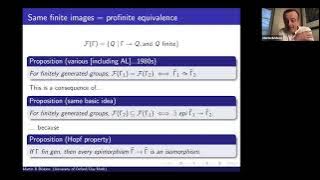Hyperoctahedral group
In mathematics, a hyperoctahedral group is an important type of group that can be realized as the group of symmetries of a hypercube or of a cross-polytope. It was named by Alfred Young in 1930. Groups of this type are identified by a parameter n, the dimension of the hypercube. As a Coxeter group it is of type Bn = Cn, and as a Weyl group it is associated to the symplectic groups and with the orthogonal groups in odd dimensions. As a wreath product it is where Sn is the symmetric group of degree n. As a permutation group, the group is the signed symmetric group of permutations π either of the set or of the set such that for all i. As a matrix group, it can be described as the group of n × n orthogonal matrices whose entries are all integers. Equivalently, this is the set of n × n matrices with entries only 0, 1, or –1, which are invertible, and which have exactly one non-zero entry in each row or column. The representation theory of the hyperoctahedral group was described by according to . In three dimensions, the hyperoctahedral group is known as O × S2 where O ≅ S4 is the octahedral group, and S2 is a symmetric group (here a cyclic group) of order 2. Geometric figures in three dimensions with this symmetry group are said to have octahedral symmetry, named after the regular octahedron, or 3-orthoplex. In 4-dimensions it is called a hexadecachoric symmetry, after the regular 16-cell, or 4-orthoplex. In two dimensions, the hyperoctahedral group structure is the abstract dihedral group of order eight, describing the symmetry of a square, or 2-orthoplex. (Wikipedia).




















